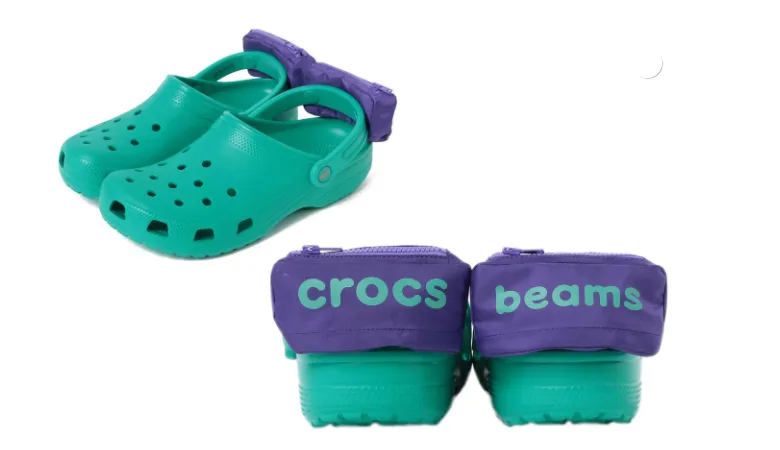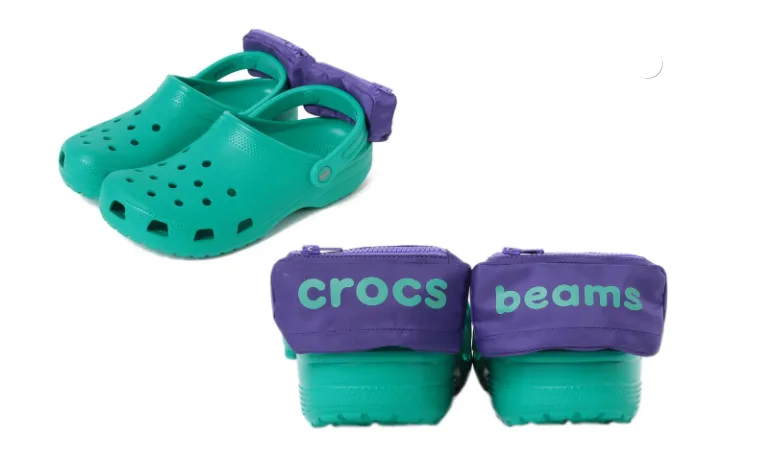
Just in time for sandal season: Crocs now have fanny packs
Sandal season is on the way, so consider yourself warned: Crocs with fanny packs are now a thing, and you might see them on sidewalks and beaches this summer.
I repeat: Crocs with fanny packs.
This is not a drill.
Crocs have paired with Beams to create the fashion innovation -- or abomination, depending on how you look at it. They can be found on the Beams website, where they sell for about $53 US a pair.

Courtesy: Beams
WARMER WEATHER IS WHEN THE CROCS COME OUT
Love them or hate them, Crocs shoes have become a symbol of summer in Canada -- alongside mosquitoes, awkward tan lines, and inappropriate snowfalls.
Crocs says its sold more than 300 million pairs of its shoes worldwide -- which means there's a good chance you, or someone you know, own a pair or two.
Available in several colours, the shoes are praised for being lightweight, comfortable and waterproof -- making them perfect for a day at the beach or life in a climate where the weather changes quickly.
They have antibacterial properties and they float.
The shoe also has a Canadian connection: The first pairs were produced here, starting in 2002.
While the company makes shoes in a variety of styles -- wedge sandals, anyone? -- the company is probably best known for its clogs.
RELATED:
And now that sandal season is here in Canada, you'll probably start seeing them more often.
Experts seem to have conflicting views on whether people should be wearing Crocs for extended periods of time.
While some styles of the shoe are designed to withstand long hours on your feet, other styles don't offer enough support for that.
Here's what some of them have to say.
CROCS: THE CONS
Dr. Megan Leahy, a Chicago-based podiatrist with the Illinois Bone and Joint Institute, told The Huffington Post in 2016 that while the "standard", backless clogs offer good arch support, but don't provide enough support for the heel. According to Dr. Leahy, an unstable heel can cause toes to lose their grip, leading to tendinitis, nail problems and calluses.
"The same thing can happen with flip flops or any backless shoes as the heel is not secured,” she adds.
Other doctors have backed her claim arguing that while the shoes have merits, wear should be limited to a few hours a day.
IT'S NOT ALL BAD NEWS
That's not to say the shoes are without merit.
They're certified by the Ergonomics Council and the American Podiatric Medical Association, and the company has created an Rx line that is aimed at promoting healthy feet.
"These shoes were designed specifically to eliminate plantar pain and achy feet," company co-founder Lyndon V. Hanson, III told WebMD.
"They also help people with injured feet, bunions, and diabetes. You've got a lot of inner support, heel cups and massaging heel nubs, and arch support. They're ideal for people with foot problems."
Harold Glickman, DPM, and former president of the American Podiatric Medical Association (APMA) told WebMD he wears the shoes all the time and recommends them to his patients.
"Crocs offer more protection for your feet than flip-flops," Glickman said.
"Flip-flops don't provide a lot of arch support; they're open-toed so you can stub your toe and hurt yourself. Crocs offer more protection and comfort than that."










